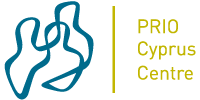This article details the results of a plausibility probe of a policy-media interaction model designed to identify instances of media influence. If sufficient evidence is found to support the model, it can be used as part of a wider study examining the impact of media coverage on decisions to intervene during humanitarian crisis, the so-called CNN effect. The model predicts media influence when policy is uncertain and media coverage is framed so as to be critical of government and empathizes with suffering people. In order to test the model, it is applied to two cases: US intervention in Bosnia in 1995 in order to defend the Gorazde 'safe area' and Operation Allied Force in Kosovo in 1999. In the first case, the model highlights the impact of critical, empathizing media coverage and policy uncertainty in effecting the US decision to defend the Gorazde 'safe area'. In the second case, the failure of critical newspaper coverage to change the Clinton Administration's air-war policy highlights the limits of media influence when there exists policy certainty. Overall, it is argued that the plausibility probe supports the prediction that media influence occurs when policy is uncertain and media coverage is critically framed and empathizes with suffering people. And that when policy is certain, media influence is unlikely to occur. As such, the policy-media interaction model should prove a useful tool in testing the claim that media coverage causes intervention during humanitarian crisis.
Robinson, Piers (2000) The Policy-Media Interaction Model: Measuring Media Power During Humanitarian Crisis, Journal of Peace Research 37 (5): 613–633.





